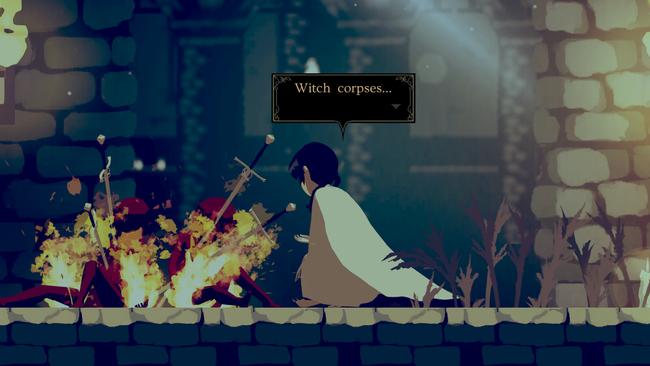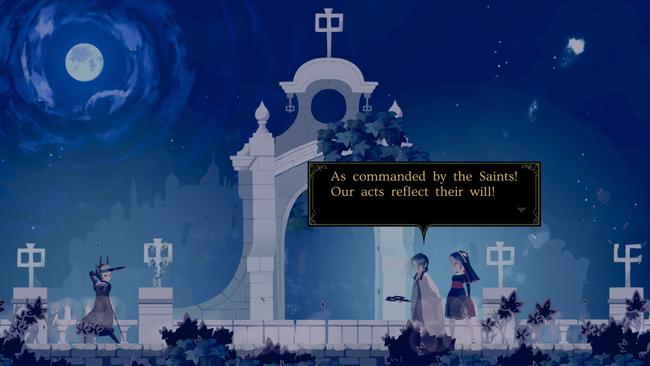
Minoria Review
Coming from the developers of Momodora: Reverie Under the Moonlight, Minoria is a spiritual sequel that carries the Metroidvania formula of the Momodora games with a new art style and world. We already know that Bombservice knows how to make fun action sidescrollers, but does this new title live up to the standards set by Momodora? While Minoria is a solid game, some hiccups make the game less polished and a bit less rewarding to play as a result.

In Minoria, you play as Sister Semilla, a nun forced to serve the church after her mother was branded a heretic. She, along with her companion Sister Fran, comes to Ramezia to purify the cite and defeat the witches that have taken over. There’s a surprising amount of world lore to dig into in Minoria, but it’s also not thrown in your face. While there are more cutscenes than in Bombservice’s previous games, the story isn’t painstakingly explained, with most of the important bits left in collectible archives that you can access in the menu.
In other words, while there’s been care in crafting a world in Minoria, you don’t have to engage in it if you don’t want to. The main focus in this game is the gameplay, without too much flavor text to get in the way of that. In this respect, Minoria is very similar to the games it's a spiritual successor of. Bombservice has delivered another super-challenging Metroidvania, and one wrong move can get you killed in no time flat.
Combat is fast-paced, requiring you to read the enemy’s moves and properly respond in order to not take damage. The dodge mechanic is still in Minoria, but there’s also a new move in the form of parrying. Time a guard perfectly before an enemy hits and Semilla will launch a flurry of hits against the foe. Minoria encourages you to parry as opposed to dodging like in Momodora, but it’s a high risk, high reward scenario. If you fail to parry correctly, you’ll take heavy consequences in getting hit. Even the most basic enemies can take off a third of your health in a hit, so every encounter is dangerous enough to weigh your options carefully.

You can still eke out an advantage with incense, though. Incense are essentially equippable spells and passive effects that can help you in battle. You start with a Healing Incense that you’ll pretty much have equipped non-stop, and you can find or buy more as the game progresses. These range from offensive and defensive spells, to buffs, to everything in between. You can also change what incense are equipped at any time, even during boss battles. The latter seems more like a design oversight than anything else, but you’ll need all the help you can get when fighting the bosses.
The boss fights are when Minoria really shines, and each requires you to have a firm understanding of the game’s mechanics to survive. During bosses, you’ll need to learn their patterns, and learn when it’s the right time to parry or if it’s safer to dodge or jump away. Each death in a boss battle is a learning experience, and typically you can learn something to take into the next attempt and be better at.
That said, the boss fights are also the times where you can see the seams in Minoria’s battle system. You’ll begin to notice that most moves don’t offer invincibility for Semilla. Most times I’ve used some of the sword techniques that are unlocked in battle has me taking a hit--it turns out that these skills don’t have enough iframes to make sure the skill is actually worth using in a fight against a boss. There are also enough times I’ve been hit while in the middle of a parry or immediately afterward, discouraging me from parrying when fighting a boss or when there was more than one enemy on screen. Also, if you time it right you can dodge multiple times without getting hurt, making dodging the most viable option in boss battles.

As I progressed through the game, something just kept feeling 'off' about Minoria’s combat, and it wasn’t until I went back to Reverie in the Moonlight until I discovered what it was. When you attack an enemy in Momodora, you can tell from the enemy feedback and their stun animations that you actually hit them. The same feedback just isn’t present in Minoria, and it leads to a lot of the problems I mentioned above. It may be cool to catch an opponent in a power sword move, but if a normal enemy not going to at least be knocked out of their attack animation and score a hit on you, then what’s the point of taking that risk in the first place?
For me, it made fights a battle in frustration instead of one of strategy and good reflexes. Minoria is clearly supposed to be a game where more risk means more reward, but unfortunately, the rewards don’t become worth it due to design choices that work against the game’s and the player’s favor.

But it’s not all bad. Since Minoria’s release, Bombservice has been releasing patches for Minoria and listening to fan feedback, improving various aspects of Minoria as they go. While it’s great that some of my issues may be addressed in the future, unfortunately, many of them are still there now, and the game must be reviewed as-is.
While Minoria is far from perfect, it does show a lot of promise for future titles. Minoria is not connected to the Momodora for a few reasons, but it’s clear Bombservice wanted to try some new things within the Metroidvania framework and it succeeds in some aspects but needs work in others. If anything, Minoria makes me excited for a Minoria 2, where a lot of the wrinkles are ironed out and all of the gameplay mechanics gel together better.